
Publisher:
Bonnie King
CONTACT:
Newsroom@Salem-news.com
Advertising:
Adsales@Salem-news.com

~Truth~
~Justice~
~Peace~
TJP
Feb-02-2012 17:13

 TweetFollow @OregonNews
TweetFollow @OregonNews
Hypocrisy and Intransigence- Mainstays of the Agent Orange Controversy
Dr. Wayne Dwernychuk Special to Salem-News.comSuspicions continue to exist between the US and Viet Nam, although the deep freeze appears to be thawing...
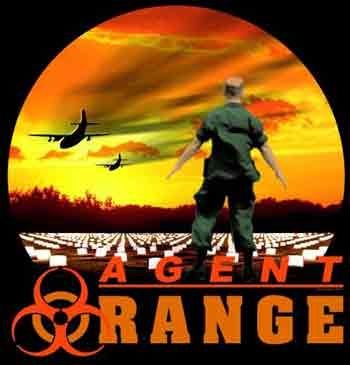 Agent Orange continues to threaten US veterans and residents of Viet Nam, where the chemicals were sprayed during the war. |
(BRITISH COLUMBIA) - From 1961 to 1971 over 77 million litres of herbicide were dispensed over southern Viet Nam by the US military through the code-named ‘Operation Ranch Hand’ (http://www.stellman.com/jms/Stellman1537.pdf and http://www.hatfieldgroup.com/UserFiles/File/ContaminantMonitoringAgentOrange/VietNamHighlights/SprayLines.PDF) . The Vietnamese reported early on during the operation that human health was being adversely affected by widespread dispersal of defoliants. Agent Orange, a 1:1 mixture of 2,4,-D and 2,4,5-T, was the most prevalent herbicide used (http://www.agentorangerecord.com/home/ and http://en.wikipedia.org/wiki/Agent_Orange).
The US government maintains their decades-old mantra that there is no unequivocal scientific evidence that use of Agent Orange has caused an increase in either birth defects in Viet Nam, or is related to other human health issues in Viet Nam. US government officials remain reluctant to accept Vietnamese studies/observations as sufficiently rigorous to definitively link US deployed herbicides to human health impacts, primarily in view of liability/compensation concerns.
The US Department of Veterans Affairs (US DVA) presently compensates US Viet Nam Veterans for health conditions that may have resulted from Agent Orange exposure while serving in Viet Nam (http://www.publichealth.va.gov/exposures/agentorange/birth_defects.asp and http://www.publichealth.va.gov/exposures/agentorange/conditions/birth_defects.asp). At least one of the health conditions for which compensation is paid has a genetic component, that is, spina bifida. It appears contradictory that the US ignores the health issues of Vietnamese citizens exposed to Agent Orange, but pays compensation to its Viet Nam Veterans for a number of illnesses related to their exposure to the herbicide … illnesses that the US Institute of Medicine (IOM) has categorized as being ‘presumed’ to be related to Agent Orange exposure, and subsequently adopted by the US DVA for veteran compensation purposes. As I understand it, compensation is awarded to a veteran if: 1) the person can prove that he or she was in the US armed forces during the time of the Viet Nam War; 2) the person can prove being in Viet Nam at the time of the Viet Nam War; 3) the person can prove the onset of the compensable disease after service in Viet Nam; and 4) the person possesses an honorable discharge from the military.
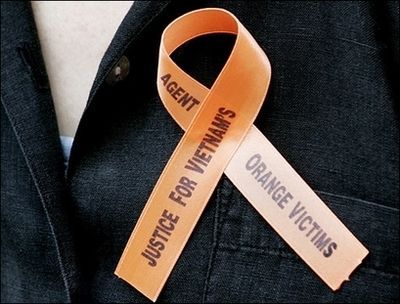
It should be noted that the categories set by the IOM, related to Agent Orange (i.e., TCDD) exposure and the ‘presumed likelihood’ of the expression of an illness being related to said exposure, results from the compilation of numerous studies from all over the world. The US policy is based on the ‘presumption of an association’ between exposure and disease, not on a ‘proof of cause and effect’. Inferences regarding association were drawn based on the literature, including toxicology and epidemiology studies pertaining to dioxin or herbicide exposure (e.g., farm workers, forestry workers, workers in chemical manufacturing plants). The Ranch Hand Study, one of the few comprehensive and systematic epidemiology studies, was included in the IOM assessment. The Ranch Hand Study was an epidemiological investigation conducted by the US Air Force to evaluate the frequency and nature of adverse health effects expressed by US Viet Nam Veterans that might be related to exposure to Agent Orange and other military herbicides used during the Viet Nam conflict.
The US DVA subscribes to a ‘presumptive exposure’ stipulation governing compensation, that is, if you had boots on the ground in Viet Nam, you were probably exposed to Agent Orange and, subject to the four conditions listed above, warrant compensation provided the illness is on the approved US DVA compensation list. This approach effectively concedes that a possible relationship (for purposes of compensation) does, in fact, exist between exposure and health consequences. However, if this ‘relationship’ holds for US Viet Nam Veterans in the eyes of the US DVA, I ask why does it not hold for the Vietnamese people for expression of the same illnesses that coincide with their exposure to Agent Orange? The US has apparently not addressed, or does not wish to address, this question, and continues unbendingly to evoke stronger criteria for people in Viet Nam than for US veterans, that is, the ‘no proven relationship’ mantra for exposure and health consequences in Viet Nam.
In Ha Noi on March 10, 2002 the US and Viet Nam signed a Memorandum of Understanding (MOU) which outlined comprehensive human health investigations and studies addressing the environmental consequences of Agent Orange. Although the environmental component of the MOU gained traction and resulted in valuable information being gathered, the human health segment became mired in controversy and disagreements on protocol, and eventually disintegrated, thus terminating any attempt to cooperatively study the human health consequences of the herbicide in the Viet Nam theatre of conflict.
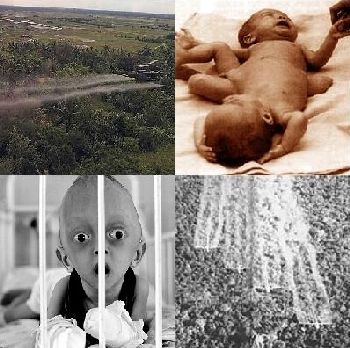
But what of the known consequences of Agent Orange and its constituents, and how this has played out in the ongoing debate of who knew what and when? Data linking birth defects in lab animals to 2,4,5-T exposure, one of the components of Agent Orange, and subsequently to the dioxin in 2,4,5-T in 1970/71, were instrumental in forcing the cessation of the Ranch Hand program. Chemical companies manufacturing Agent Orange, in concert with the US military, claimed ignorance regarding the potential for human health consequences as a result of exposure to the herbicide. However, in a ‘Confidential’ memo dated June 24, 1965 from V. K. Rowe of the Biochemical Research Laboratory of Dow Chemical, it is stated:
| “ |
As you well know, we had a serious situation in our operating plants because of contamination of 2,4,5,- trichlorophenol with impurities, the most active of which is 2,3,7,8,- tetrachlorodibenzodioxin [TCDD]. This material is exceptionally toxic; it has a tremendous potential for producing chloracne or systemic injury. …… I am particularly concerned here with persons using the material on a daily, repeated basis such as custom operators may use it. The whole 2,4,5-t industry would be hard hit and I would expect restrictive legislation, either barring the material or putting very rigid controls upon it. …… I trust you will be very judicious in your use of this information. It could be quite embarrassing if it were misinterpreted or misused. |
” |
The recognition that TCDD was “exceptionally toxic” and has a “tremendous potential for producing chloracne or systemic injury” is an indisputable admission by the industry of the dangers inherent to the herbicide. Chloracne is an acne-like eruption associated with over-exposure to halogenated aromatic compounds, such as chlorinated dioxins. This condition was first described in German industrial workers in 1897.
The statement that “systemic injury” is also highly probable, resulting from exposure to the herbicide (i.e., TCDD), effectively categorizes the entire human body as being at risk for serious damage to critical systems/organs as being at risk for serious damage to critical systems/organs (http://www.atsdr.cdc.gov/substances/toxsubstance.asp?toxid=63).
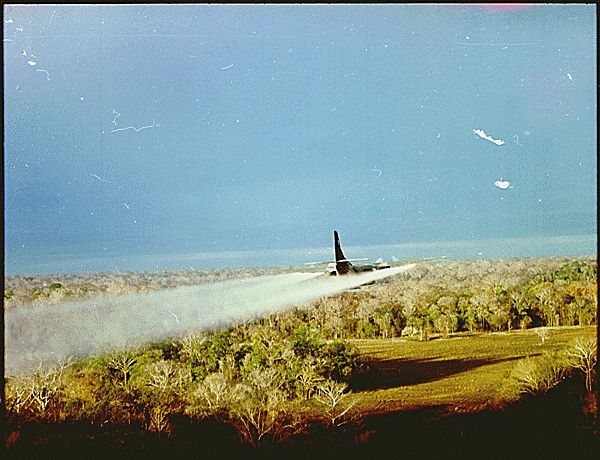
Dr. Gerson Smoger, a lawyer for Viet Nam Veterans exposed to Agent Orange, addressed the US Supreme Court for leave to sue the chemical companies directly for health issues caused by their exposure to the herbicide. In March 2009, a decision was rendered wherein the right for such a lawsuit was denied.
Dr. Smoger submitted a letter to all interested parties explaining the malicious conduct of the chemical companies, such as their knowledge of the toxic nature of 2,4,5-T (http://www.agentorangelaw.net/).
Dr. Smoger’s accounting in the above noted website presents in his ‘Item 3’ a statement that as far as he was able to ascertain, the US government was unaware of the toxic nature of 2,4,5-T and/or Agent Orange. However, other documentation suggests otherwise.
In addition to the clear admission by the chemical companies that they had knowledge of the toxic nature of dioxin, which was produced in tandem with the manufacture of 2,4,5-T, was a communication which I have great difficulty understanding how it has played so insignificantly in the arguments of responsibility.
On September 9, 1988 Dr. James R. Clary sent a letter to Senator Tom Daschle. Dr. Clary was a research scientist with the Chemical Weapons Branch of the US Air Force during the period 1962-1965. Dr. Clary’s comments in the above noted letter follow:
| “ |
When we (military scientists) initiated the herbicide program in the 1960’s, we were aware of the potential for damage due to dioxin contamination in the herbicide. We were even aware that the ‘military formulation’ had a higher dioxin concentration than the ‘civilian’ version due to the lower cost and speed of manufacture. However, because the material was to be used on the ‘enemy’, none of us were overly concerned. We never considered a scenario in which our own personnel would become contaminated with the herbicide. And, if we had, we would have expected our own government to give assistance to veterans so contaminated. |
” |
This assertion from a former research scientist with the US military, involved in aspects of the Ranch Hand program, is clear evidence that those in charge of the program (i.e., the US government) were aware of the potential consequences of Agent Orange exposure, and that the claim of ignorance by the US military was unfounded. Dr. Clary’s quote appeared in Admiral Zumwalt’s May 1990 report to the US Secretary of the Department of Veterans Affairs which addressed the association between adverse health effects and exposure to Agent Orange (http://www.hatfieldgroup.com/UserFiles/File/ContaminantMonitoringAgentOrange/VietNamHighlights/Zumwalt.pdf). Dr. Clary’s statement appears to have been ‘buried’ in the ongoing discourse regarding responsibility and knowledge of the toxic nature of Agent Orange.
Dr. James Clary recently contacted me (December 2011) as a result of my work on Agent Orange in Viet Nam. It became clear during telephone conversations that Dr. Clary sincerely regrets that he was not able to do more, and that more positive action has not been taken to help both US Viet Nam Veterans who were exposed to Agent Orange, and segments of the Vietnamese population who also suffer from such exposures … particularly given the knowledge base of dioxin toxicity early on in the Ranch Hand program.
Dr. Clary provided me with a brief overview of some of his activities related to Agent Orange while in the Chemical Weapons Branch (pers. comm., January 23, 2012):
| “ |
I was the primary author of ADO 42 (Advanced Development Objective) for the chemical weapons, which included the design of the A/A45Y-1 …, [the] herbicide spray tank …that was ultimately installed on the C-123 [Agent Orange spray aircraft] … We were hardware developers/testers … We worked closely with the US Army … to facilitate a “proper match” between the various agents and the hardware. If you are wondering how I came to have relevant info for the Senator [Senator Tom Daschle] … while preparing my report, I came across a lot of pertinent documents from the early 60’s between the military and Dow/Dia Shamrock [Diamond Shamrock]. |
” |
Dr. Clary made the comment to me (pers. comm., January 21, 2012): “I would like the US Viet Nam Veterans to know that I tried to do the right thing” … this in reference to him contacting Senator Daschle’s office and making the above noted statement on what the US military knew. In addition to the letter addressed to Senator Daschle, Dr. Clary provided a number of documents/reports to the Senator which further corroborated his declaration. He also wished me to convey these words to any US Viet Nam Veterans who may have occasion to read this article:
| “ |
Please let them know that I am sorry that I did not come forward sooner. Just maybe I'll sleep a bit better if folks know that at least one scientist with the program [Chemical Weapons Branch] had/has regrets and is sorry for participating ......... I should not have been so naive as to believe that our government would take care of GI's who became contaminated. I really feel sorry for the poor [victims] in Vietnam, knowing how so many have and will continue to suffer the effects of dioxin. |
” |
Dr. Clary informed me of a document he wrote dated July 13, 1971 for Project CHECO (Contemporary Historical Examination of Current Operations) on RANCH HAND: HERBICIDE OPERATIONS IN SEA (South East Asia) which carried a ‘Classified’ label (www.dtic.mil/dtic/tr/fulltext/u2/a484753.pdf). This synoptic report outlined the Ranch Hand program with headings of ‘Mission and Tactics’, ‘Herbicide Review 1961-1967’, ‘Herbicide Operations 1967-1971’, ‘Biological Aspects of Herbicide’, ‘Effects of Defoliation’ (on soils, plants, animals), ‘Biological/Ecological Effects of Herbicides’, ‘Ranch Hand Sorties’ (gallons of herbicide dispensed and aircraft assigned), ‘Herbicide Projects’, and ‘Herbicide Projects in Laos 1965-1969’. During the intervening years, following completion of the report in 1971, various aspects of the document appeared in other publications; however, the complete document remained ‘Classified’ until August 15, 2006, 35 years after it was written. It is evident the contents of this report could have been an embarrassment to the US government if released in 1971.
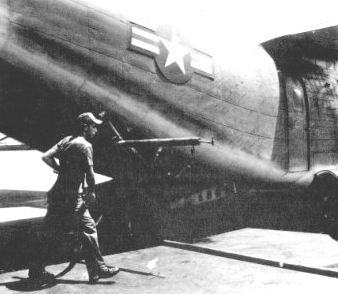
It has long been acknowledged that the particular dioxin in Agent Orange, TCDD, is extremely toxic, persistent, and a carcinogen. In August 1997 the International Agency for Research on Cancer, a division of the World Health Organization, rendered this decision on TCDD (http://monographs.iarc.fr/ENG/Monographs/vol69/volume69.pdf).
There is a strong suggestion that the US government ‘indirectly’ accepts this conclusion, given that they have contributed millions of dollars to assist in the cleanup of dioxin contamination at the former Ranch Hand air base at Da Nang. A comprehensive assessment of dioxin contamination at the Da Nang air base may be found at: http://www.hatfieldgroup.com/UserFiles/File/AgentOrangeReports/DANDI-II1450/Da%20Nang%202009%20Report.pdf).
If dioxin was not a potential danger to human health in Viet Nam, and not responsible for illnesses in Viet Nam, why then is the US moving to assist Viet Nam in the cleanup of the Da Nang air base? I submit the US does, in fact, recognize the dangers of dioxin, in conjunction with a recognition of the need to provide assistance to Viet Nam, but not within the defining parameters of ‘compensation’. Nevertheless, it is hypocritical to not accept Vietnamese illnesses as being comparable to those suffered by US Viet Nam Veterans. Their adamant denial of the existence of absolute proof of a cause/effect relationship, related to Agent Orange exposure, appears unwavering. Proof of cause and effect is not required for compensation of US Vietnam Veterans, only a ‘presumed association’ of exposure to illness. Therefore, US policy pertaining to exposed people in Viet Nam directly contradicts US policy pertaining to exposed US Vietnam Veterans.
Suspicions continue to exist between the US and Viet Nam, although the deep freeze appears to be thawing, as evidenced by the recent assistance funding for dioxin cleanup activities and other humanitarian contributions from the US. In February 2003, a year after the MOU between the US and Viet Nam was signed, the then US Ambassador Burghardt submitted an ‘Unclassified’ memo, but labeled ‘Sensitive’, to the US Secretary of State focusing on the “assessment of Vietnamese attitudes” regarding the MOU. The twelve page memo outlines in detail how, according to the Ambassador, the Vietnamese were essentially responsible for the failure of the human health segment of the MOU. Even given this attitude, the US has moved to apparently be more sympathetic to the plight of Viet Nam on environmental and human health issues.
It is also stated in the ambassadorial memo that the Vietnamese do not wish to accept studies that indicate aerially sprayed regions of Viet Nam are not areas that require urgent remediation, given the level of contamination therein is very low. The intimation being that Viet Nam wishes to advance the condition that dioxin contamination is rampant throughout southern Viet Nam.
However, Viet Nam’s clear focus on former US military bases as dioxin ‘hot spots’ (http://www.popstoolkit.com/about/articles/aodioxinhotspotsvietnam.aspx, http://www.hatfieldgroup.com/UserFiles/File/ContaminantMonitoringAgentOrange/VietNamHighlights/Chemosphere_HotSpots.pdf, and http://www.aspeninstitute.org/policy-work/agent-orange/cleaning-dioxin-contaminated-soils), and, therefore, sites for urgent remediation, tends to refute the embassy position.
As noted, the politics of the Agent Orange controversy appears to have softened with a more cooperative/conciliatory stance being taken between the two governments. However, it is my opinion that the US will be hard pressed to deviate from their present position regarding cause and effect, regardless of how compelling the evidence … and how contradictory their position is in not compensating Vietnamese citizens who display comparable illnesses that warrant compensation in US Viet Nam Veterans.
Perhaps it is time to set aside the elusive goal of undertaking lengthy and, undoubtedly, costly health studies to determine the relationship of Agent Orange exposure to human health issues in Viet Nam. With the scientific community’s clear acceptance that components of Agent Orange are toxic and may severely impact human health, it may be possible to move forward and assist Viet Nam in dealing with their problem of dioxin contamination without pointing fingers. The ongoing support of the US in assisting dioxin cleanup activities at Da Nang, for example, is a highly positive step; given these circumstances, it would appear there is room for optimism.
Funds that might be necessary to clearly elucidate a definitive cause/effect relationship between Agent Orange exposure and human health effects should be used for much needed humanitarian purposes in Viet Nam. Much good could be accomplished without the necessity of proving a ‘rigorous cause/effect link’. Vietnamese victims coping with the legacy of Agent Orange are facing an uncertain future … they require urgent assistance … proving a cause/effect link would require considerable time and significant dollars … this should not take precedence over addressing Viet Nam’s immediate humanitarian needs.
 |
 |
 |
 End Israeli apartheid |
Articles for February 1, 2012 | Articles for February 2, 2012 | Articles for February 3, 2012
Quick Links
DINING
Willamette UniversityGoudy Commons Cafe
Dine on the Queen
Willamette Queen Sternwheeler
MUST SEE SALEM
Oregon Capitol ToursCapitol History Gateway
Willamette River Ride
Willamette Queen Sternwheeler
Historic Home Tours:
Deepwood Museum
The Bush House
Gaiety Hollow Garden
AUCTIONS - APPRAISALS
Auction Masters & AppraisalsCONSTRUCTION SERVICES
Roofing and ContractingSheridan, Ore.
ONLINE SHOPPING
Special Occasion DressesAdvertise with Salem-News
Contact:AdSales@Salem-News.com

googlec507860f6901db00.html



Terms of Service | Privacy Policy
All comments and messages are approved by people and self promotional links or unacceptable comments are denied.
Vernon USMC May 2, 2012 9:35 am (Pacific time)
Sir this article was to explore how the VA and congress have lied and cheated the benifits Vietnam Vets we all know every war was for money and the rich to get richer stop taking up for these draft dodgers and get them out of office before they steal SS and Medicare
David February 4, 2012 11:16 am (Pacific time)
Editor: I agree, the French should have stayed home and minded their own business and the US should have insisted on it. However, estimates of Vietnamese deaths found on the web go from 2-3 million or so. If you consider the north vietnamese were the aggressors, they did invade South Vietnam you know, then they, and their leader ho, are responsible for all the deaths that happened during the war. So ho did kill his millions and destroyed many worlds because as an old Jewish proverb goes, 'Killing one person is like killing a whole world'. In the end, what good did it do ho to conquer the South? He and giap died and the gov't they left behind is gradually becoming more democratic. One commentary said that a generation or two from now, the Vietnamese will look back on the war and realize it was one big mistake. However great one may think the cause is, it's mostly about the leaders ego.
Editor: David, it sounds like we found the middle ground, all respect to you for your service and experience. It is true that Vietnam increasingly becomes more like a democratic country, and it is also a fact that the Diem govt was full of problems .
David February 3, 2012 8:55 pm (Pacific time)
In the summer of 68 at Vinh Long, we had one hooch maid who said to us as we went to the airfield in the mornings, "kill cong". After hearing that several times, I asked her, through a translator, why she said that. She said "My husband was a village chief and the vc wanted him to support them; he refused. After several 'no's', they came to the village, had everyone gather together and shot him. Yes editor, ho killed millions because he started a war of conquest just like hitler. I suppose you admire mao and stalin also who also killed millions. How does your che tshirt fit?
Editor: Just like Hitler, are you kidding? You need to look at the past, Stalin who you reference, did kill millions of his own, however Ho Chi Minh didn't kill millions. U.S. forces murdered people in the war constantly for cooperating with the wrong side, Ho Chi Minh was a hero for the Americans during WWII, did you know that? He fought the Japanese on behalf of Roosevelt and it was a great relationship, all of the garbage happened under Truman. (Great American Heroes: Ho Chi Minh, Saddam Hussein and Osama bin Laden - Tim King Salem-News.com). You don't like my words, that is fine. I don't see your war as having been necessary, I mean it was a lot closer to that than either of the current wars, and the Communists were terrible to their own people, I do not discount that fact at all. I just question the desire of countries to place their own in far away lands to conduct warfare that could have been avoided by dealing with issues properly when the time existed to do so. In Vietnam it was '48, the French had no business going back. In Afghanistan it was in '89 and '90.
robert v lower February 3, 2012 2:24 pm (Pacific time)
how bad does the vietnam gov what they need to provide they case,i a vietnam vet,i left 3 kids in vietnam in 1970,i would said they do not want anything,i have try before to talk to somebody in vietnam but all i get is nothing,what i have is 2 big for any comment page,they not cover the vietnam vet,they all deiding from the agent orance,the vietnam gov want profife i know of at lest 3 girls that have the agent orange and they all dieing from it,one is 40 miles from me,but nobody want to know what ready happen,until we get justice for the kids of the agent orange vietnam is not going to get anything from us we do not ever said that the vietnam have died from agent orange,but there 2 places for who has died of ao here
Sarasota John February 3, 2012 7:31 am (Pacific time)
We lost that war let the winner pay for the damage, it's that what we have done in the past when we were on the winning side. Fair is fair.
Anonymous February 2, 2012 6:06 pm (Pacific time)
ANYONE WHO WENT TO VIETNAM BACK IN THE 50'S/60'S SAW OPEN SEWERS, GROSS POLLUTION, AND EVERY OTHER KIND OF WASTE BEING INCORPORATED IN THEIR FOOD, IRRIGATION AND WATER SUPPLIES. THESE PEOPLE HAD VERY LITTLE MEDICAL PERSONNEL AVAILABLE, INTER-BLOOD RELATION MARRIAGE IS VERY COMMON, ESSENTIALLY ZERO INNOCULATIONS. THERE WAS CONSIDERABLE BIRTH DEFECTS WITHIN THE POPULATION, AS THERE IS EVEN IN MODERN COUNTRIES LIKE AMERICA, CANADA AND EUROPE. I FREQUENTLY SAW OLDER ADULTS WHO WOULD HAVE BEEN BORN IN THE 20'S, 30'S,40' WITH SEVERE BIRTH DEFECTS, WHO WERE BORN LONG BEFORE AMERICA CAME AS PER OUR SEATO TREATY WITH SOUTH VIETNAM WHO ASKED FOR HELP IN DEALING WITH THE NORTH VIETNAMESE INVADERS, WHO NOW CONTROL THE GOVERNMENT OF ALL OF VIETNAM. THEY HAVE KILLED MILLIONS OF THEIR CITIZENS WHO DID NOT GET AWAY FROM THAT OPPRESSIVE GOVERNMENT. AMERICA OWES NOTHING TO THIS ENEMY, NOTHING. SOME OF YOU WHO HAVE NO SCIENTIFIC NOR STATISTICAL BACKGROUND OPINE THAT AGENT ORANGE CAUSED ALL THEIR BIRTH DEFECTS. THAT IS NOT TRUE AND WILL NEVER BE SCIENTIFICALLY PROVEN. WHEN THEY MAKE A FULL ACCOUNTING OF OUR MIA'S, THEN MAYBE WE CAN DISCUSS A SCIENTIFIC INQUIRY THAT WOULD BE TRANSPARENT AND OPEN TO PEER REVIEW. BUT THEY WOULD BE RESPONSIBLE FOR THEY WERE THE WARMONGERS, NOT US! YES WE PROVIDE AG DISABILITY FOR MANY OF OUR VETERANS, AND RIGHTLY SO, BECAUSE THE VA HAS BEEN CLEARLY IRRESPONSIBLE WITH OUR VETERANS AND IN THIS WAY WE CAN BE COMPENSATED IN SOME WAY FOR OTHER MORE COMMON DISEASES. JUST LOOK AT THE STATS.
Editor: I will publish this comment but I have to object to several points. Yes, the Communists were terrible, but what was Truman thinking (with U.S. backing) allowing them to re-colonize after that episode - Vichy France? You paint the North as monsters but I have friends today - one is one of the few survivors of My Lai, whose fathers were VC and NVA and they seem as proud of their dad as the next guy. You believe it was right for the US to import its military might to bring a better day for South Vietnam, I appreciate that and if it had worked, it still would have brought massive human destruction. I honor your mission in Vietnam, but then who took out Pol Pot? And you say the Vietnamese killed 'millions' and I've never seen evidence of that. But let's stay on track; after eliminating the Khmer Rouge the Vietnamese were invaded by their allies, the Chinese, in the Sino-Vietnam War. Those Communists from the north who battled you guys for a decade plus kicked the crap out of the Communist Chinese and sent them packing. It isn't great, there isn't religious freedom, but we have to admit that the final outcome of VN is better than expected. I think your points about pollution when you arrived (in the middle of a war) are neither here nor there, I know the Vietnamese weren't poisoning themselves. Responsibility is healing. Iraq and Afghanistan are polluted waste zones, but neither are the fault of the people there, it is all us man. This I have seen with my own eyes.
[Return to Top]©2025 Salem-News.com. All opinions expressed in this article are those of the author and do not necessarily reflect those of Salem-News.com.